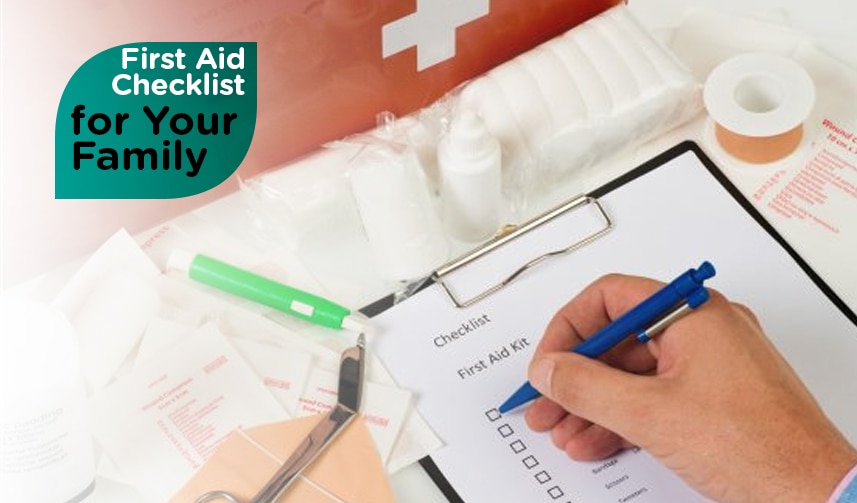Every home should keep a complete first aid kit that is kept within reach. Having the right supplies will empower you to manage an emergency right away. It is recommended to have a first aid kit in your vehicles and also in your residence. Also, make it a point to bring this kit on family travels.
You can buy a first aid kit at drugstores or from the nearest Red Cross office, or you can make one of your own. If you want to make one, use a container that is spacious, solid, easy to carry, and easy to open. Plastic boxes or crafts containers are ideal since they’re lightweight, have handles, and offer a lot of room and separate sections within.
First-Aid Kit Checklist
There are no set necessities for a first aid kit, yet there are a couple of things that should be stocked essentially. You may need to stock additional things if your family has various requirements. Make it a point to check all medications, rehydration sachets, and skin treatments routinely to guarantee that they are not expired.
Here are some things that you should place on your first aid kit:
- A first-aid manual that is updated
- A list of emergency contacts
- Sterile gauze pads of various sizes
- Adhesive tape
- Adhesive bandages or band-aids in several sizes
- Elastic bandage
- Splint
- Antiseptic wipes
- Soap
- Antibiotic ointment
- The antiseptic solution, like hydrogen peroxide
- Hydrocortisone cream (1%)
- Acetaminophen and ibuprofen
- Extra prescription medicines (if the family is going on vacation)
- Tweezers
- Sharp scissors
- Safety pins
- Disposable instant cold packs
- Calamine lotion
- Alcohol wipes or ethyl alcohol
- Thermometer
- Tooth preservation kit
- Plastic non-latex gloves (at least 2 pairs)
- Flashlight and additional batteries
- Blanket
- Mouthpiece for giving CPR from your local Red Cross office
After you have placed your supplies in your first aid kit:
- Read the first aid manual so you’ll learn how to use what’s in your first aid kit. Also, you should make sure whether it is updated
- Ensure that the kit is stored in a place where kids can’t reach and adults can access easily.
- Check the supplies every now and then. Replace missing things or anything that has been expired.
- Let parents and guardians know where the kit is and how to use it.
- Check the flashlight batteries to guarantee that they work.
- If you’re traveling by air, pack the kit in your checked luggage. Some items won’t be permitted in the plane as hand-carried items.
Product Recommendation:









